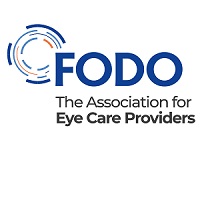Professional Matters Optometry & Dispensing
New joint guidance maps clinical training to glaucoma patient pathways
New joint guidance maps clinical training to glaucoma patient pathways
Guidance opens opportunities for optometrists with relevant higher qualifications to support multidisciplinary workforce.
The College of Optometrists and The Royal College of Ophthalmologists have developed new guidance in response to the National Institute for Health and Care Excellence (NICE) NG81 Glaucoma: diagnosis and management guidance to enable high-quality care for glaucoma patients, using the wide range of professional skills available.
The Colleges’ joint guidance aims to empower optometrists and other healthcare professionals (HCPs) in primary and secondary eye care to contribute to glaucoma care. This will increase capacity, reduce the backlogs which put patients at risk of permanent and avoidable sight loss, and improve patient experience.
The guidance maps optometrists’ qualifications and training to the different categories of glaucoma risk, as set out by the GLAUC-STRAT-FAST risk tool. The guidance highlights the need for glaucoma care pathways to fully recognise and utilise local optometrists’ competences, and specifies which qualifications are required for autonomously managing patients in different risk categories.
Angela Whitaker MCOptom, Optometrist and Co-Author of the new guidance, explains: “It’s great to see the release of this new guidance, developed to provide a best practice approach to the organisation, delivery, and management of glaucoma care. The introduction will enable this care pathway to be delivered in a wide range of environments, and open up opportunities for optometrists with the relevant higher qualifications and experience to utilise their skills. This will help reduce the backlogs which put glaucoma patients at risk of permanent and avoidable sight loss.
“Multiple models of glaucoma care have evolved across the UK’s health services, and it is crucial that optometrists in primary and secondary care are empowered to contribute to multidisciplinary eye care pathways, helping to increase capacity and improve patient outcomes.”
The guidelines specify that services should be configured to meet patient demand, and developed using robust risk stratification.























